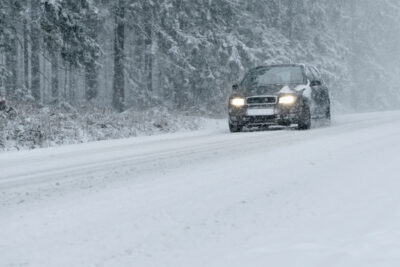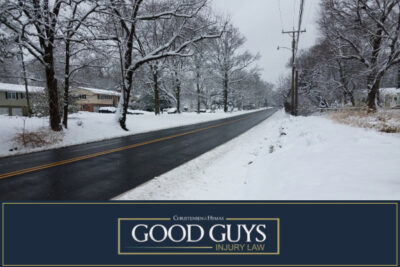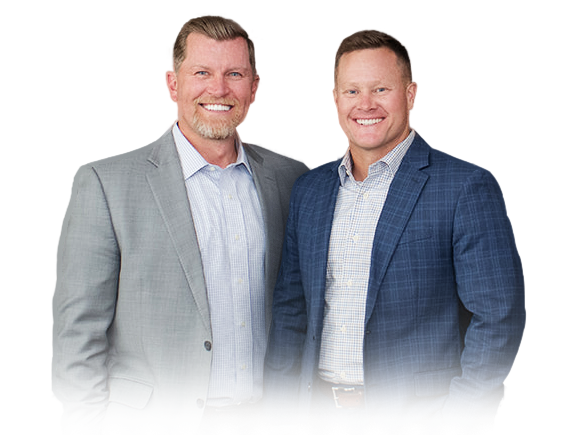
Nearly 40% of all car crashes in Utah happen during bad weather, with winter months being the most dangerous. At Good Guys Injury Law, our Utah car accident attorneys focus on weather-related accident cases. We help victims who get hurt because of these risky weather conditions. We know how weather impacts car accidents in Utah and why this matters for staying safe and building strong legal cases.
Weather-Related Car Accidents in Utah
Utah’s changing seasons create different weather hazards throughout the year. From mountain snowstorms to flash flooding, these conditions need special care from drivers and special knowledge from lawyers handling weather-related crashes.
Table of Contents
The Science Behind Weather-Related Crashes
When rain, snow, or ice covers Utah roads, your tires grip the road 70% less. This means your car needs almost three times more distance to stop compared to dry roads. Utah Department data shows this causes over 5,000 weather-related crashes each year.
Salt Lake City faces unique challenges because of its valley location. Adverse weather conditions can change quickly, catching drivers by surprise when road conditions suddenly worsen.
Utah’s Unique Weather Challenges
Driving in Utah means dealing with both mountain and valley conditions – often on the same trip. Snowy roads in mountain areas can have heavy snowfall, while valleys stay dry. The Salt Lake Valley gets foggy conditions that can limit your sight to less than 50 feet.
These weather differences across Utah mean drivers must stay alert. What looks like a clear day in one spot might have black ice or snow and ice just miles away.
Dangerous Weather Conditions for Utah Drivers

Some weather events significantly impact road safety in Utah. Knowing these hazards helps drivers stay safe and helps accident victims build stronger cases when crashes happen.
Icy Roads and Winter Driving Hazards
Black ice forms mostly in shaded canyon areas and on bridges where air flows both above and below the road. When temperatures drop below freezing, these spots become serious hazards for drivers.
The I-15 near Point of the Mountain is notably dangerous, with Utah Highway Patrol reporting many multi-car crashes each winter. In freezing temperatures, even cautious drivers can lose control on unexpected icy roads.
Heavy Rain and Hydroplaning Risks
Utah’s hard soil creates poor drainage during rainstorms. This leads to water buildup on roads. Hydroplaning likely happens at speeds over 35 mph during heavy rain, especially on worn roads.
Rainy weather causes many accidents near St. George. Even a small amount of water makes slippery roads where your tires lose contact with the pavement.
Flash Flooding on Utah Roads
Areas near canyons face high risks from flash flooding. Recent deadly incidents near Zion show these dangers, where water levels rise quickly with little warning.
Poor road design often makes these risks worse. Bad drainage systems on rural highways get overwhelmed during winter storms, turning roads into flowing water that’s hard to cross safely.
High Winds and Visibility Issues
The I-80 near Tooele often has dust storms that reduce visibility to zero. High winds create hazardous conditions for tall vehicles by pushing them into other lanes.
Mountain passes get blowing snow that creates whiteout conditions, making it impossible to see road signs or other drivers. These low-visibility situations lead to many rear-end collisions in the winter months.
How Bad Weather Increases Accident Risk
Bad weather is a major contributing factor in Utah crashes. Here’s how weather impacts your safety:
- Longer stopping distances: On dry roads, a car at 60 mph needs about 240 feet to stop. On wet roads, that jumps to 400 feet. In icy conditions, it takes over 720 feet. Keep a safe following distance in adverse weather.
- Poor visibility: Fog, heavy rain, or snow can cut your sight distance. Winter sun glare off snow can temporarily blind drivers. When you can’t see traffic signals or other vehicles, crashes become more likely.
- Driver errors: Common mistakes include sudden braking on ice or failing to use windshield wipers properly. Many drivers also forget to use fog lights in poor visibility, which can help other drivers see you.
Winter weather demands more focus, which tires drivers quickly. The mental strain of driving in a snowstorm can slow your reaction time and increase accident risk.
Determining Liability in Weather-Related Crashes

Weather makes figuring out who’s at fault more complex. While all drivers must adjust to conditions, other parties may share blame. Our attorneys know how to handle these cases.
Driver Responsibility in Bad Weather
Utah law requires all drivers to take reasonable precautions based on current weather conditions. Going the speed limit during a blizzard isn’t “reasonable” and counts as negligence.
In recent Utah court cases, drivers were found liable despite icy conditions because they didn’t slow down. Police reports often show that other drivers failed to maintain a safe following distance.
When Weather Excuses Negligence
The “Act of God” defense has strict limits in Utah. While truly sudden events might reduce liability, courts usually reject weather excuses when forecasts warn of hazardous conditions.
We fight back against weather blame by showing that most bad weather is predictable. Multiple factors beyond weather often contributed to the crash, including driver behavior.
Government Liability for Road Conditions
Local governments must keep roads reasonably safe, including clearing snow within set timeframes. We’ve won cases against cities for poor winter road maintenance.
Road design lawsuits have set important standards in Utah. When roads collect water due to design flaws rather than extreme rainfall, government agencies may share fault for resulting car accidents.
Protecting Yourself After a Weather-Related Crash
What you do right after a weather-related accident greatly affects your chances of getting fair compensation. Follow these safety tips:
- Document the accident scene: Take photos of road conditions, including any snow, ice, or standing water. These images provide crucial evidence for your insurance claim.
- Get weather reports: Request official weather data for the accident date. The National Weather Service keeps detailed records that we can use to establish conditions.
- Seek medical care: Get prompt treatment and keep all medical records. Weather-related crashes often cause injuries that aren’t immediately obvious.
- Watch what you say: Don’t admit fault or make statements about visibility or road conditions without legal advice.
Insurance adjusters often use bad weather as a reason to deny claims, calling incidents “unavoidable.” This tactic ignores the fact that drivers must adjust to the weather appropriately.
Finding the Best Car Accident Lawyer in Utah

Weather-related accident claims need special legal expertise. Here’s what makes our approach different in handling these complex cases.
Why Experience With Weather Cases Matters
Our track record includes many successful claims involving snowy or icy roads, heavy rain, and other adverse weather. We understand Utah road safety standards and when they fall short.
This specialized knowledge helps us identify liability even when insurance companies try to blame the weather. Our firm has secured fair compensation for clients in cases that other attorneys might have given up on.
How We Handle Weather-Related Claims
We work with weather experts who can testify about the exact conditions at your accident location. Their input helps establish what a reasonable driver should have done.
Our accident investigation looks at how weather conditions obscure road signs or affect visibility. This approach strengthens your case and often leads to better settlements.
Contact Good Guys Injury Law for a Free Consultation

Weather-related car accidents require specialized legal support to ensure you receive compensation for medical bills, lost wages, and emotional trauma. Our Utah team knows how to gather the evidence needed to overcome weather-based defenses.
We offer comprehensive services, including detailed accident scene investigation and aggressive negotiation with insurance companies. Our attorneys handle the legal process while you focus on recovery. Contact our Utah team anytime for a free consultation – we charge no fee unless we win your case.






